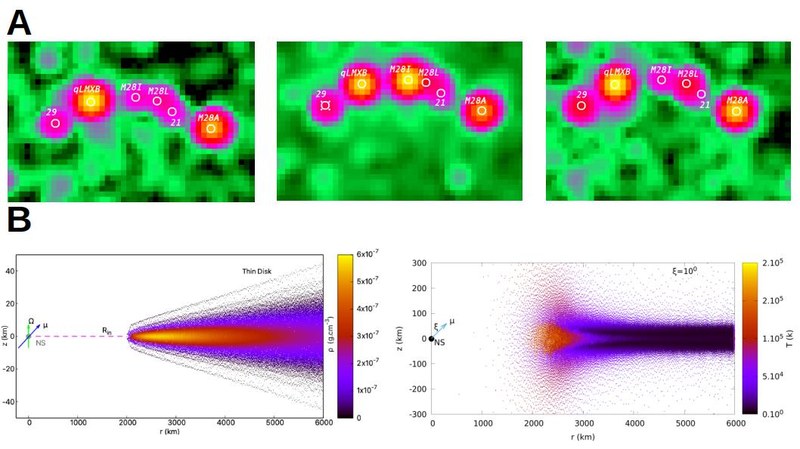Disks around ultra-fast spinning millisecond pulsars: from observations to numerical simulations
Nov 08, 2024
Eda Vurgun defended her doctoral tesis entitled “Compact binary millisecond pulsars: X-ray observations and numerical simulations” on November 7, 2024 at the Besòs Campus. The thesis has been co-directed by Domingo García Senz and Manuel Linares Alegret
Millisecond pulsars (MSPs) represent a fascinating and crucial subset of rotation-powered pulsars (RPPs). Distinguished by their exceptionally rapid rotation periods (Ps < 30 milliseconds) and powerful magnetic fields (ranging from 108 to 109 Gauss), MSPs are cosmic marvels. These rapidly spinning neutron stars are believed to form through a process in which mass transfer from a companion star in a binary system causes the neutron star to accelerate, or “spin up” to millisecond periods. This “recycling” process not only rejuvenates the pulsar but also sheds
light on the complex mechanisms of stellar evolution.
This thesis comprises two parts.The first part explores a population of neutron stars using X-ray observational data (observational part, first figure). Globular clusters (GCs) are known to be extremely efficient at forming MSPs and low-mass X-ray binaries (LMXBs), due to their high stellar densities. Since many of those MSPs and LMXBs are closely packed within the GC core, their X-ray counterparts can only be fully resolved using Chandra’s subarc-second angular resolution. In this thesis, a deep study of the GC M28 (NGC 6626) is presented. We discover a double-peaked X-ray orbital flux modulation in M28I (IGR J18245–2452) during its pulsar state, centered around pulsar inferior conjunction. Using both hydrogen and helium neutron star atmosphere models, we infer a neutron star radius of R = 9.2 - 11.5 km and R = 13.0 - 17.5 km, respectively, for a neutron star mass of 1.4 Mʘ (68% confidence range).
In the second part of the thesis, we study the interaction of the magnetic field of the neutron star with the nearby accretion disk, carrying out detailed magneto-hydrodynamics (MHD) simulations that incorporate realistic disk structures into the numerical simulations (simulation part, second figure). The primary objective of this section is to elucidate the mechanism driving state transitions in transitional MSPs, whose physical origin remains largely unknown. To perform the simulations, we use an axisymmetric MHD smoothed particle hydrodynamics (SPH) code recently developed in our group. Initial simulations without magnetic fields established a stable disk configuration, which served as a further study baseline. Subsequent simulations introduced a magnetic field with varying inclination angles to observe its impact on disk stability and the short-term evolution of the simulated portion of the disk. Our findings showed that aligned rotators maintained stability for completing multiple orbits, while higher inclination angles led to instability at the disk.

Share: